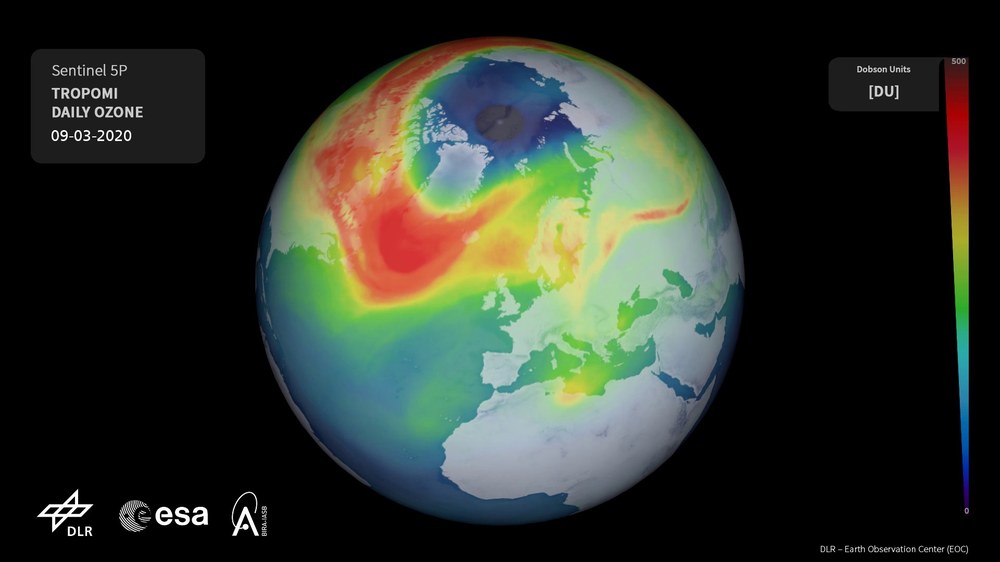Unusual ozone hole over the Artic
We got used to the fact that an ozone hole appears every year in the Antarctic spring.
Due to special meteorological conditions this spring a similar effect is observed over the northern polar region. The ozone hole is caused by the combination of temperatures below -80°C, sunlight, and ozone depleting substances (ODS). In contrast to the Antarctic, the Artic polar vortex in the spring is less stable and the temperatures inside the vortex are relative warm. This year however the Artic vortex is currently quite stable and the air in the stratosphere cools down more than usual. Now towards the end of the polar winter the first sunlight in the North Pole initiates an unusual strong ozone depletion causing an ozone hole over the Artic.

Ozonloch über dem Nordpol
Your consent to the storage of data ('cookies') is required for the playback of this video on Quickchannel.com. You can view and change your current data storage settings at any time under privacy.
Since 14th March 2020, the ozone columns over the Artic decreased to 220 Dobson Units (DU) and less. regions with total ozone below 220 DU form the so called ozone hole. However in Europe the current Artic ozone is no reason to worry about because over Europe the ozone columns are still in the usual range over 400 DU. Moreover compared to the typical southern polar ozone hole with a size of about 20 million km² the current northern polar reduction is small with an area of less than 1 million km².
TROPOMI on Setinel-5 Precursor measures a number of trace gases, aerosol and cloud properties with a global coverage on a daily basis. The retrieval algorithms for total ozone are being developed by the Earth Observation Center (EOC) of the German Aerospace Center (DLR) and the Belgian Institute for Space Aeronomy (BIRA). EOC is responsible for routine generation of TROPOMI Level 1 and Level 2 products on behalf of ESA.
